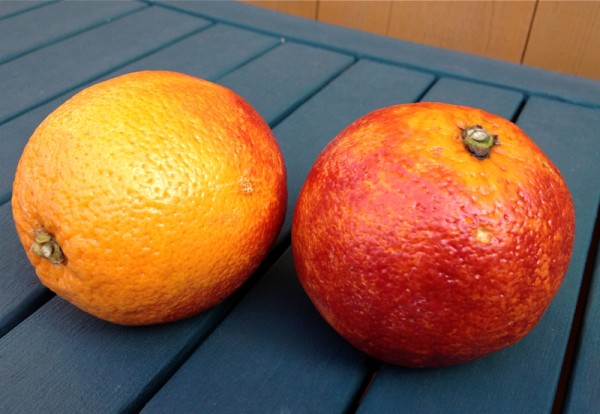Ginger and Marmalade Flapjacks
When I first started baking three or four years ago I started out with flapjacks, having heard they are so simple you can even let the kids make them. They sounded foolproof. I quickly proved that wrong with several batches being so bad even the local birdlife passed them over in favour of some fried chicken bones on the path. Reminded to never to make my ungrateful feathered friends those lard and seed things Blue Peter used to tell me about, I have been in a sulk with flapjacks ever since.
An impromptu visit to The Beanery in Loughborough Junction the other day piqued my interest again with their delicious ginger flapjacks. The warm tingle of ginger lifted the oats nicely, but made with that American upstart corn syrup instead of good old British golden syrup, they lacked the stickiness I crave in a flapjack. There was nothing else for it but to try and make my own. I decided to use syrup and add the gooey-ness of a blob of homemade marmalade to really give my teeth something to sink into.
Excited by this flavour combo, but still nervous there would be a repeat of the Massive Crumblings™ of yore, I needed a failsafe recipe and safe hands. I turned to Felicity Cloake and her Perfect series, reading her recipe and all the comments from flapjack lovers underneath. It looked promising.
Ginger and Marmalade Flapjacks (adapted from Felicity Cloake’s recipe)
- 150g salted butter
- 3 tablespoons golden syrup
- 2 tablespoons dark muscavado sugar
- 3 tablespoons marmalade (pop a bit more in if it’s very coarse cut)
- 4 teaspoons ground ginger
- 250 g porridge oats
- sliced stem or crystallised ginger
Line a tray (I used a 23cm by 23cm one) with greaseproof paper and preheat the oven to 150℃. Melt the butter, sugar and golden syrup together until bubbling gently, then add in the marmalade and as soon as it is melted, take off the heat. Put the oats and the ground ginger and sliced ginger in a bowl and add in the butter-syrup mixture, stirring well. Once you’ve marvelled at how seemingly healthy oats soak up butter like a hungry sponge, spread the mix out in the tray well, making sure you fill the corners properly. Bake for 25 minutes. I took mine out when they were still a bit anaemic looking but they darkened as the residual heat cooked them a bit more outside the oven.
Cool for about 5 minutes, then cut into pieces. I got 9 ‘I’m going on a ten mile hike’ sized chunks or 16 ‘just a mouthful ones’. I then on Felicity’s advice left them to cool completely in the tray to stop them falling apart when lifted out. The wait nearly defeated me but I was rewarded by a nice symmetrical traybake which was delightfully firey with ginger and tangy with marmalade peel and slivers of candied ginger. Best served with a cup of good strong tea, they will theoretically keep well in an airtight container, but bolstered by my first ever flapjack success, I failed to have any notable leftovers. The flapjack jinx is over!











 I haven’t thought much about marmalade for years, despite a fondness for Paddington himself, but I was given some for Christmas last year and have been pondering what to do with it since I don’t like oranges. Inspired by Oliver Thring’s recent piece on this traditional preserve in
I haven’t thought much about marmalade for years, despite a fondness for Paddington himself, but I was given some for Christmas last year and have been pondering what to do with it since I don’t like oranges. Inspired by Oliver Thring’s recent piece on this traditional preserve in